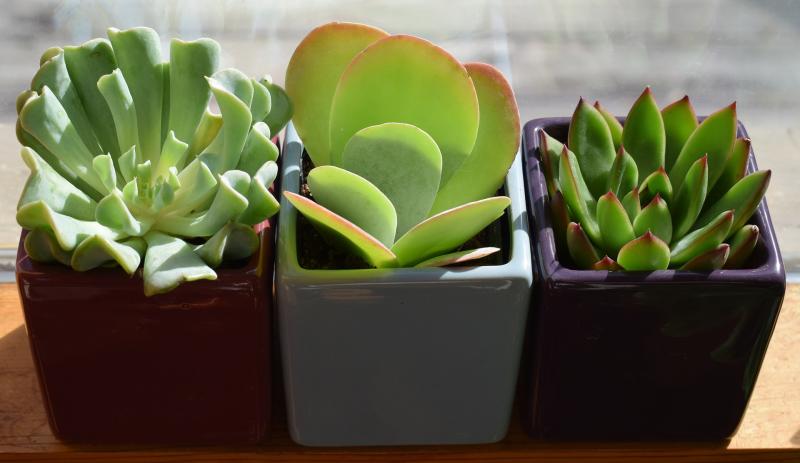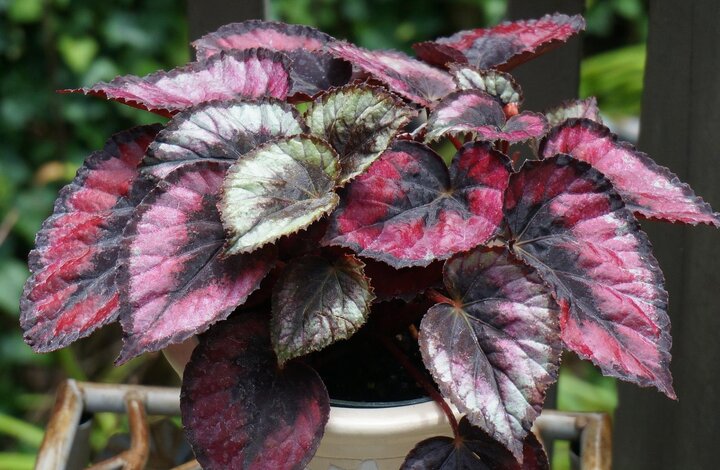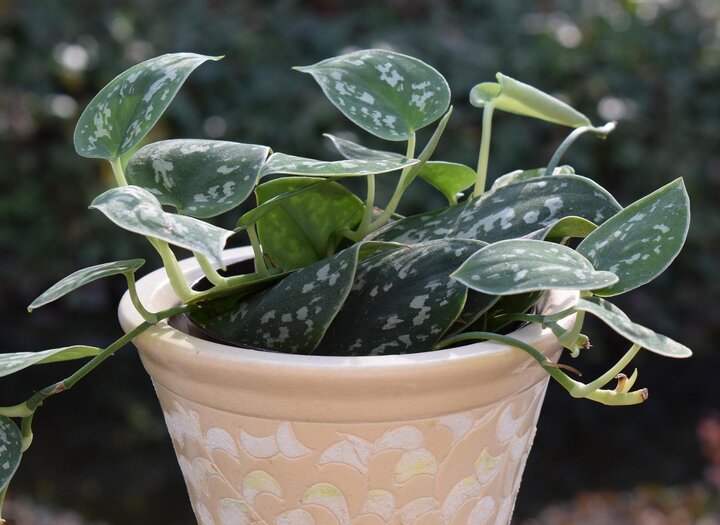Sarah Browning, Nebraska Extension Educator

trio of succulents prefer bright winter sunlight and cool temperatures. Pictures by Pixabay.
Most plants are energized and invigorated by a summer outdoors. Even delicate plants like ferns have a growth spurt if placed in a shaded location and watered properly. While outside, houseplants require large amounts of water due to increased light levels, heat and wind evaporation.
When houseplants are brought back indoors in fall, seasonal light levels have started to fall back from their mid-summer high intensity. Light levels drop even more inside the house. Temperatures have also dropped and wind evaporation that plants experienced while outdoors has stopped. All this means that once houseplants are moved back indoors in fall, their water requirements are drastically reduced.
Keeping your plants heathy and thriving during winter requires your special attention to watering, sunlight, humidity levels and fertilization.
Avoid Overwatering
More houseplants die from overwatering than from any other cause. Adjusting your watering routine, once houseplants are moved back inside, is essential for the plant's continued survival. Most plants benefit when the soil is allowed to dry between waterings. This dryness ensures that oxygen penetrates to the plant's root system, oxygen that is just as essential for good plant growth as water. The trick is determining how dry soil should be allowed to reach, between waterings, for each plant species. Often a plant can be allowed to wilt slightly before it is watered; thus giving an indication when water is needed.
Make sure your plant containers all have drainage holes! This is a very important step to avoiding "invisible" overwatering - or allowing your plants to sit in water continually.
Water Plants Thoroughly
No matter if the plant is a cactus, or an azalea that needs continual, even moisture, always water plants thoroughly. A thorough watering wets the entire soil ball in the container and leaches away excess fertilizer salts built up in the soil. Fertilizer salts can burn roots resulting in burnt or dried leaf edges and plants that wilt, even though they seem to have plenty of water.
The following two methods are great for watering houseplants. First, place the entire container in a sink filled with water and do not remove it until air bubbles have stopped coming from the planting container. Then place the container in an empty sink and allow it to drain for several minutes.
A second method is to place the container in an empty sink and pour water on top of the soil until water begins to drain from the bottom of the pot. Water the container once more and allow the excess water to drain away. This ensures you have soaked the entire root ball as you watered.
Reduce Watering Frequency
Reducing the frequency of watering is the best way to limit the amount of water a plant receives while inside during winter. A plant that needed watering once a day while outside in July and August may only required watering once a week or less in the house during winter.
Monitor plants carefully and test soil moisture levels before watering. If the top one-inch of soil feels dry or the plant begins to wilt slightly, most plants will be ready for another watering.

Also keep in mind that some plants - like ferns, Rex begonias, Prayer Plant and Calathea to name a few - require high humidity to grow well. Indoor humidity levels are always lower than those in a greenhouse, in fact during winter when furnaces are running, indoor air can be as dry as desert air. Considering that most houseplants are tropicals, adapted to rainforest or riverside humidity levels, makes it easy to see why growing some plants indoors can be such a challenge.
Plants requiring high humidity are best placed in bathrooms or kitchens; rooms normally more humid than the majority of the house. Or use a cloche - a tall, bell-shaped, glass covering - placed over delicate plants to maintain a higher level of humidity around the leaves.

Avoid over-fertilization. Plants require less fertilizer under low light conditions and for houseplants, almost all indoor winter locations are "low light". Burned or dried leaf margins and wilted plants can also be a sign of root damage to the plant caused by salt buildup in the soil from over fertilization.
Periodic leaching of your plants will help reduce the buildup of fertilizer salts. Put your plant in the bathtub or a deep sink. Mix 1 teaspoon epsom salts in one gallon of water and pour the mixture into the plant's pot, a little at a time- you don't want to wash the plant away!- until the water starts to come out the bottom drain holes. Allow it to drain away. Do this several times to each plant. The magnesium in epsom salts will attach to the salts and help pull them out of the soil.
Cactus Care
Cactus and many succulents thrive if kept cool during the winter months. Lower temperatures encourage the development of sturdy plants and stimulate flower bud development. Cool 55-60 degrees Fahrenheit are ideal, but don't let temperatures drop below 45 degrees Fahrenheit. However, they still require high light conditions during this period, so a cool bedroom with a south facing window would be ideal.
Image from Pixabay.com.
- Rex Begonia 'Red Kiss' - requires high humidity while indoors in winter
- Philodendron 'Silva'
Search Our Archive
Associated Video
Water Houseplant Care
Nebraska Extension Assistant Educator Scott Evans follows up on houseplant selections by discussing how to properly cares for them